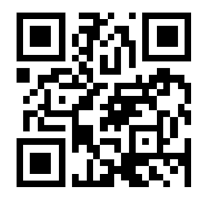How many of you are familiar with this image? First time I saw one, two things came to mind:
The QR code eliminates these two barriers and allows its contents to be decoded at high speed via mobile phone or PDA. However, QR codes have much more to offer than immediate access to a website; for the pharmaceutical marketer, they are an invaluable tool for us to learn more about our customer base.
A QR code allows an immediate customer relationship to be established and then facilitates a prolonged engagement that has the capacity to be followed and understood. And, in the case of a non-profit, the relationship can be in support of a good cause. Recently, The Core Nation has partnered with the American Cancer Society to promote the 2010 Great American Smokeout on November 18. (See the press release to learn more.) Central to this campaign is a series of billboards and posters that contain a QR code that people can use to be directed, immediately, to a microsite. We took a simple poster and created an extended personal engagement by inviting the audience to respond immediately to the motivating call to action through this smartphone technology.
One of the key drivers of QR codes is their ease of use for patients; almost everyone knows how to capture images with their cell phone. This level of patient engagement will further close the loop and allow marketers to readily understand the habits of their target audience. QR codes are just beginning to gain traction with pharmaceutical marketers. One of the restraining barriers is a lack of FDA guidance on the use of the Internet and social media for pharma marketing; however, FDA is reporting it is still on track to issue such guidance sometime in 2010. Once that is published, we can expect a veritable avalanche of QR codes to be found anywhere a person can point their mobile phone. The real success of these will not be in driving traffic, but in knowing how to preserve and enhance the relationship once they get to where you want them to go.
What are your thoughts on QR codes? Are you integrating them into your marketing mix?
RELATED TOPICS

Ken is a great deal more than just the president of a medical communications company. He is something of a hybrid. He’s part marketing manager, part creative director, and part copywriter. To the chagrin of his peers—but to the delight of his clients—Ken is a consummate perfectionist. As a former creative director for a high-end consumer agency, he challenged his creative teams to go beyond the mundane to produce work with real creative impact, something he’s just as fervent about today. From producing and directing TV commercials, to launching DTC and Rx-to-OTC switches, Ken brings his clients a world of experience in OTC pharmaceuticals as well as business, lifestyle, and high-end consumer products and services. Whether huddled with clients behind a mirror in a market research center in Houston, facilitating a strategic workshop in Madrid, or developing a global campaign either in the New Jersey or California office, Ken is always fully engaged, bringing “bestness” to all areas of his hectic but full life.

